Sergio Naval Marimont
Ensembled Cold-Diffusion Restorations for Unsupervised Anomaly Detection
Jul 09, 2024Abstract:Unsupervised Anomaly Detection (UAD) methods aim to identify anomalies in test samples comparing them with a normative distribution learned from a dataset known to be anomaly-free. Approaches based on generative models offer interpretability by generating anomaly-free versions of test images, but are typically unable to identify subtle anomalies. Alternatively, approaches using feature modelling or self-supervised methods, such as the ones relying on synthetically generated anomalies, do not provide out-of-the-box interpretability. In this work, we present a novel method that combines the strengths of both strategies: a generative cold-diffusion pipeline (i.e., a diffusion-like pipeline which uses corruptions not based on noise) that is trained with the objective of turning synthetically-corrupted images back to their normal, original appearance. To support our pipeline we introduce a novel synthetic anomaly generation procedure, called DAG, and a novel anomaly score which ensembles restorations conditioned with different degrees of abnormality. Our method surpasses the prior state-of-the art for unsupervised anomaly detection in three different Brain MRI datasets.
DISYRE: Diffusion-Inspired SYnthetic REstoration for Unsupervised Anomaly Detection
Nov 26, 2023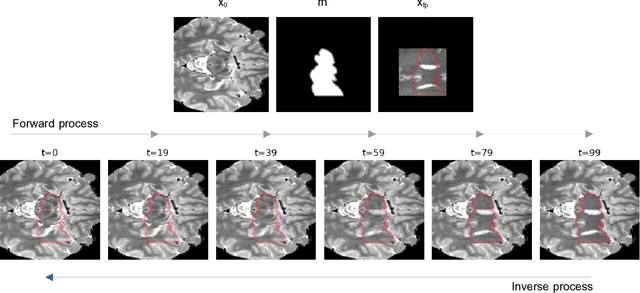
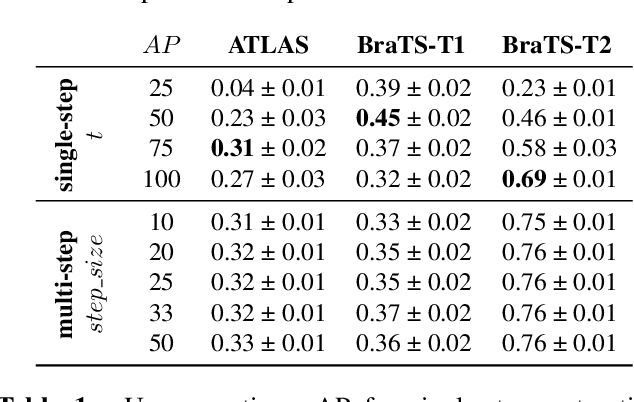
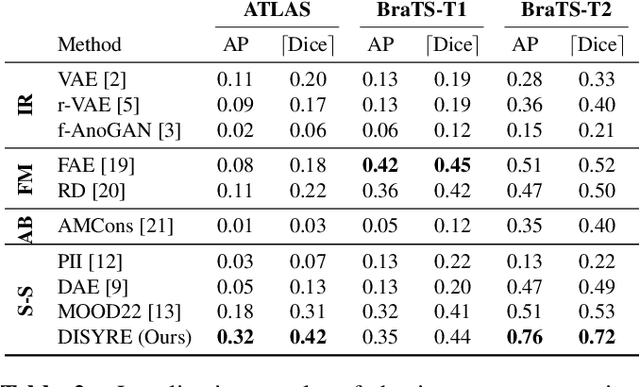
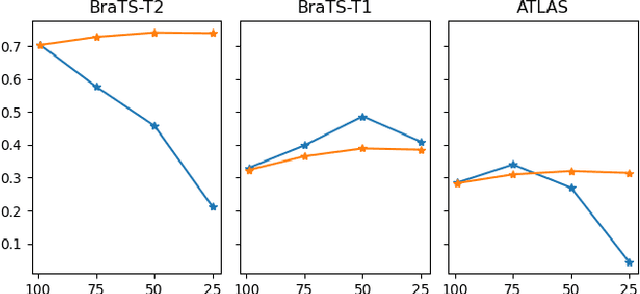
Abstract:Unsupervised Anomaly Detection (UAD) techniques aim to identify and localize anomalies without relying on annotations, only leveraging a model trained on a dataset known to be free of anomalies. Diffusion models learn to modify inputs $x$ to increase the probability of it belonging to a desired distribution, i.e., they model the score function $\nabla_x \log p(x)$. Such a score function is potentially relevant for UAD, since $\nabla_x \log p(x)$ is itself a pixel-wise anomaly score. However, diffusion models are trained to invert a corruption process based on Gaussian noise and the learned score function is unlikely to generalize to medical anomalies. This work addresses the problem of how to learn a score function relevant for UAD and proposes DISYRE: Diffusion-Inspired SYnthetic REstoration. We retain the diffusion-like pipeline but replace the Gaussian noise corruption with a gradual, synthetic anomaly corruption so the learned score function generalizes to medical, naturally occurring anomalies. We evaluate DISYRE on three common Brain MRI UAD benchmarks and substantially outperform other methods in two out of the three tasks.
Harder synthetic anomalies to improve OoD detection in Medical Images
Aug 02, 2023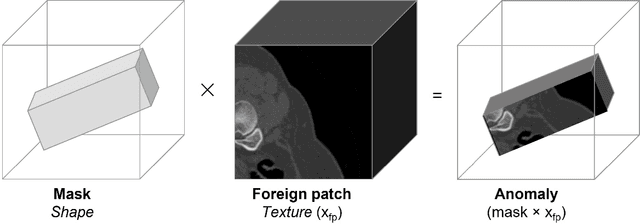
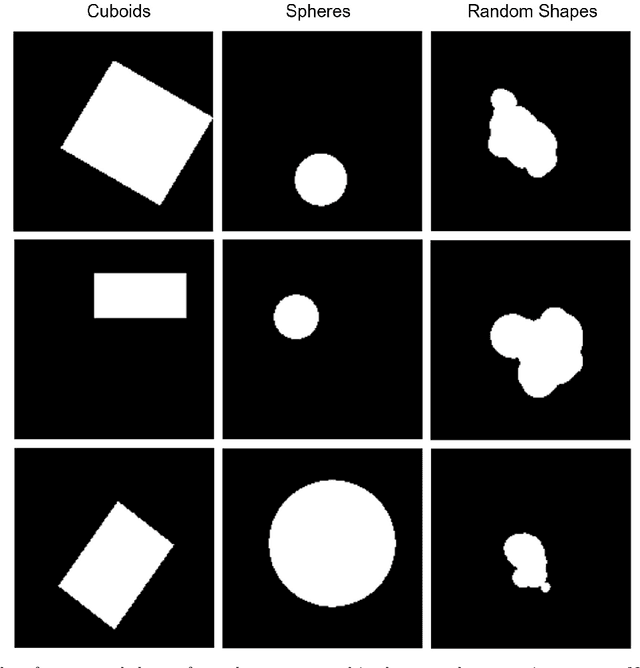
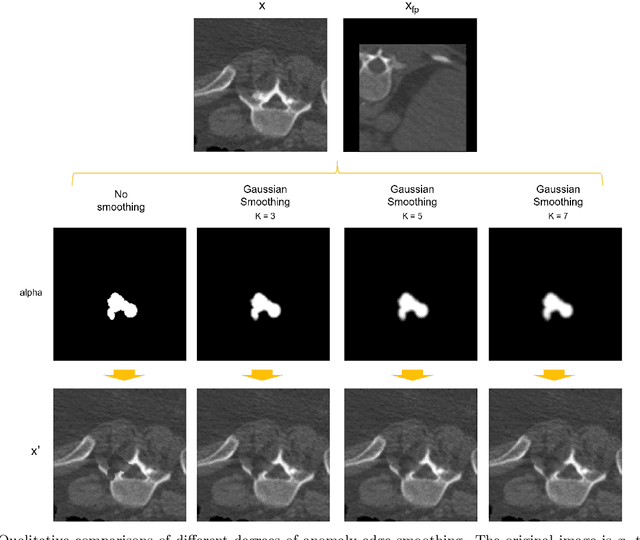
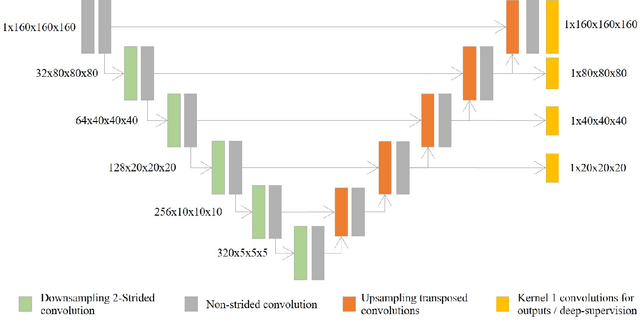
Abstract:Our method builds upon previous Medical Out-of-Distribution (MOOD) challenge winners that empirically show that synthetic local anomalies generated copying / interpolating foreign patches are useful to train segmentation networks able to generalize to unseen types of anomalies. In terms of the synthetic anomaly generation process, our contributions makes synthetic anomalies more heterogeneous and challenging by 1) using random shapes instead of squares and 2) smoothing the interpolation edge of anomalies so networks cannot rely on the high gradient between image - foreign patch to identify anomalies. Our experiments using the validation set of 2020 MOOD winners show that both contributions improved substantially the method performance. We used a standard 3D U-Net architecture as segmentation network, trained patch-wise in both brain and abdominal datasets. Our final challenge submission consisted of 10 U-Nets trained across 5 data folds with different configurations of the anomaly generation process. Our method achieved first position in both sample-wise and pixel-wise tasks in the 2022 edition of the Medical Out-of-Distribution held at MICCAI.
MIM-OOD: Generative Masked Image Modelling for Out-of-Distribution Detection in Medical Images
Aug 02, 2023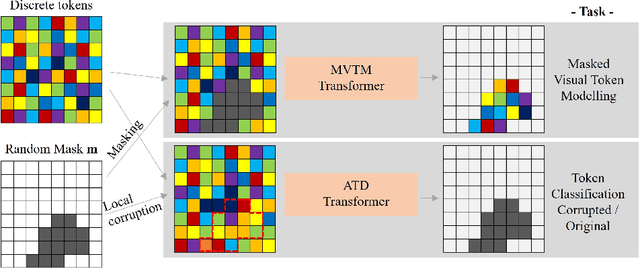

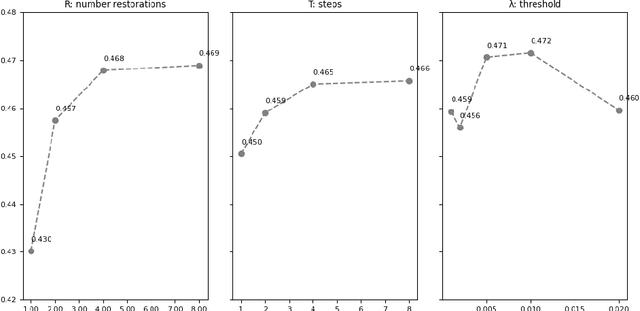
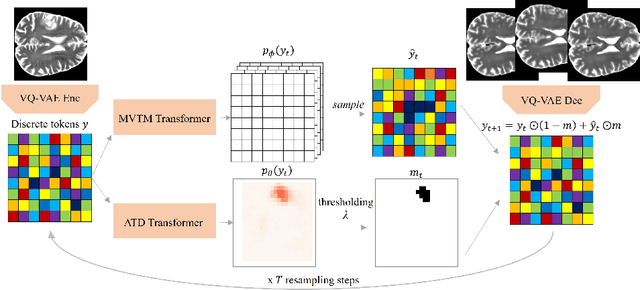
Abstract:Unsupervised Out-of-Distribution (OOD) detection consists in identifying anomalous regions in images leveraging only models trained on images of healthy anatomy. An established approach is to tokenize images and model the distribution of tokens with Auto-Regressive (AR) models. AR models are used to 1) identify anomalous tokens and 2) in-paint anomalous representations with in-distribution tokens. However, AR models are slow at inference time and prone to error accumulation issues which negatively affect OOD detection performance. Our novel method, MIM-OOD, overcomes both speed and error accumulation issues by replacing the AR model with two task-specific networks: 1) a transformer optimized to identify anomalous tokens and 2) a transformer optimized to in-paint anomalous tokens using masked image modelling (MIM). Our experiments with brain MRI anomalies show that MIM-OOD substantially outperforms AR models (DICE 0.458 vs 0.301) while achieving a nearly 25x speedup (9.5s vs 244s).
Implicit U-Net for volumetric medical image segmentation
Jun 30, 2022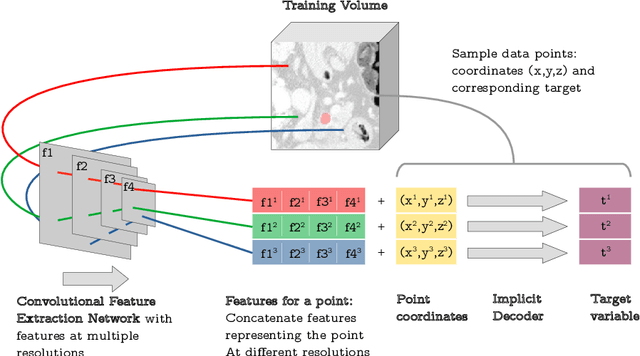
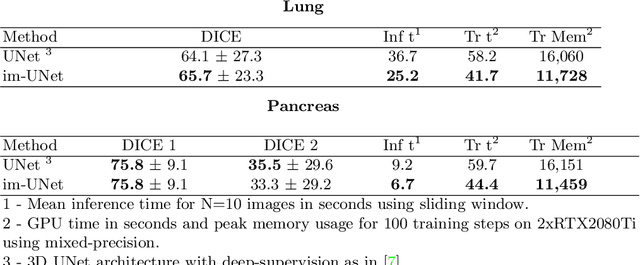
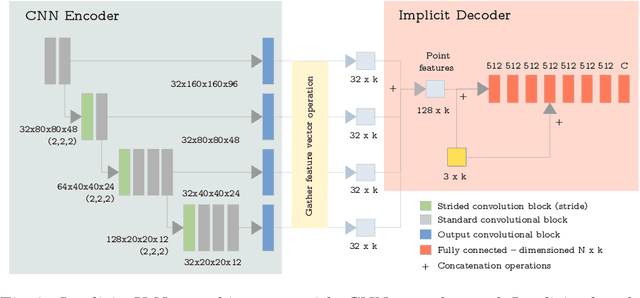
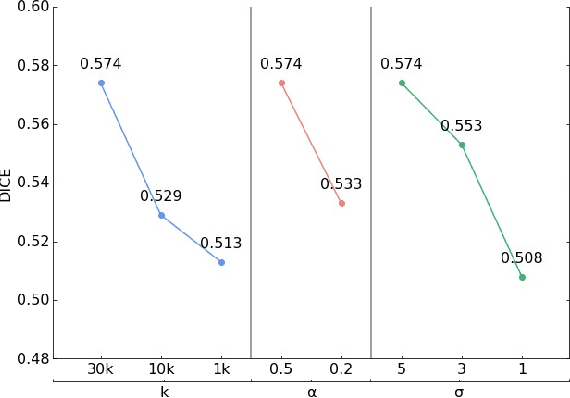
Abstract:U-Net has been the go-to architecture for medical image segmentation tasks, however computational challenges arise when extending the U-Net architecture to 3D images. We propose the Implicit U-Net architecture that adapts the efficient Implicit Representation paradigm to supervised image segmentation tasks. By combining a convolutional feature extractor with an implicit localization network, our implicit U-Net has 40% less parameters than the equivalent U-Net. Moreover, we propose training and inference procedures to capitalize sparse predictions. When comparing to an equivalent fully convolutional U-Net, Implicit U-Net reduces by approximately 30% inference and training time as well as training memory footprint while achieving comparable results in our experiments with two different abdominal CT scan datasets.
Implicit field learning for unsupervised anomaly detection in medical images
Jun 09, 2021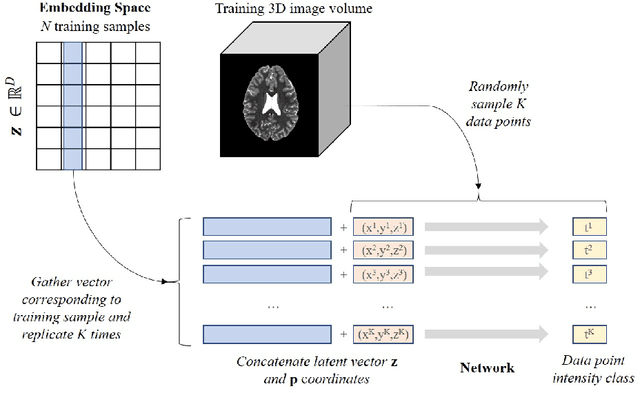
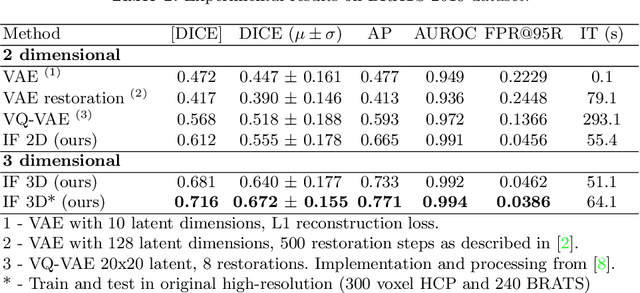

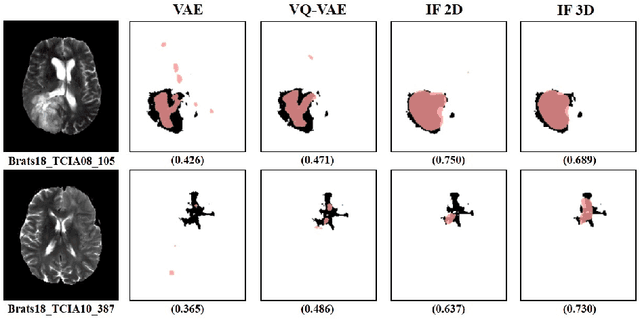
Abstract:We propose a novel unsupervised out-of-distribution detection method for medical images based on implicit fields image representations. In our approach, an auto-decoder feed-forward neural network learns the distribution of healthy images in the form of a mapping between spatial coordinates and probabilities over a proxy for tissue types. At inference time, the learnt distribution is used to retrieve, from a given test image, a restoration, i.e. an image maximally consistent with the input one but belonging to the healthy distribution. Anomalies are localized using the voxel-wise probability predicted by our model for the restored image. We tested our approach in the task of unsupervised localization of gliomas on brain MR images and compared it to several other VAE-based anomaly detection methods. Results show that the proposed technique substantially outperforms them (average DICE 0.640 vs 0.518 for the best performing VAE-based alternative) while also requiring considerably less computing time.
Anomaly detection through latent space restoration using vector-quantized variational autoencoders
Dec 12, 2020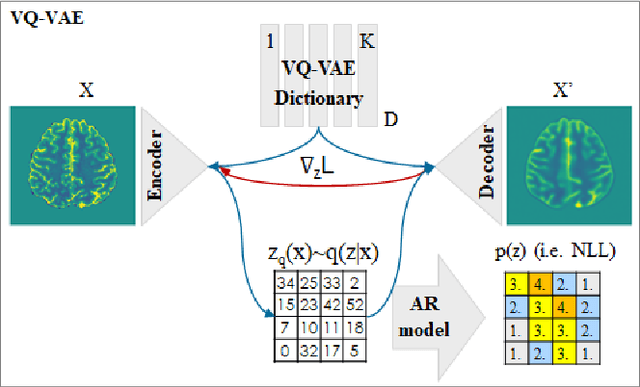



Abstract:We propose an out-of-distribution detection method that combines density and restoration-based approaches using Vector-Quantized Variational Auto-Encoders (VQ-VAEs). The VQ-VAE model learns to encode images in a categorical latent space. The prior distribution of latent codes is then modelled using an Auto-Regressive (AR) model. We found that the prior probability estimated by the AR model can be useful for unsupervised anomaly detection and enables the estimation of both sample and pixel-wise anomaly scores. The sample-wise score is defined as the negative log-likelihood of the latent variables above a threshold selecting highly unlikely codes. Additionally, out-of-distribution images are restored into in-distribution images by replacing unlikely latent codes with samples from the prior model and decoding to pixel space. The average L1 distance between generated restorations and original image is used as pixel-wise anomaly score. We tested our approach on the MOOD challenge datasets, and report higher accuracies compared to a standard reconstruction-based approach with VAEs.
 Add to Chrome
Add to Chrome Add to Firefox
Add to Firefox Add to Edge
Add to Edge